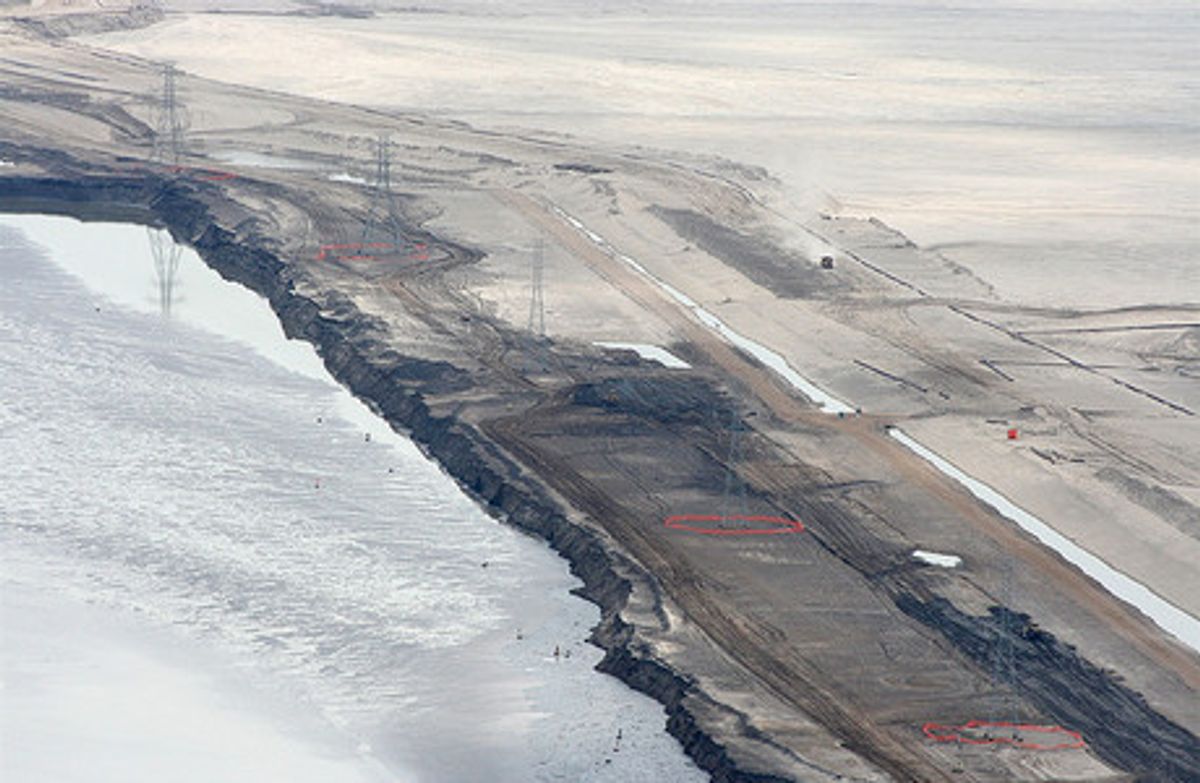The Royal Society of Canada has issued a major report on the environmental and health impacts of oil sands development in northern Alberta, a subject that has huge economic implications for the province and country and big implications for North American fossil fuel supplies. The report will not be the last word on this immensely important subject.
The report, commissioned in October 2009, was prepared by a panel of well-qualified experts in environmental health, toxicology, land reclamation and ecological restoration, hydrogeology, integrative biology, economics, and engineering. It primarily addresses concerns articulated by environmentalists, representatives of indigenous peoples (the groups Canada calls its First Nations), and other local citizens. What it does not do is make a comprehensive cost-benefit analysis of whether, on balance, oil sands development is worth the prices paid in environmental degradation, scenic squalor, and human discomfort.
The Canadian oil sands are located in a relatively remote area that is sparsely inhabited and yet, to judge from photos, splendid in its vast isolation. It includes one major protected zone, the Buffalo National Park. So worries about oil sand development are not limited to just how it might affect this or that, here or there, but how it will transform the character of a whole region.
Thus, however authoritatively the report addresses the specifics, it remains open to the charge that it almost literally sees only the trees, but not the forests.
Among major findings of the report, Environmental and Health Impacts of Canada's Oil Sands Industry:
--no evidence of contaminant exposures at levels that could affect downstream populations adversely
--need for more frequent biological monitoring and more accessible research results
--enhanced regulatory capacities, with emphasis on acquisition of needed technical personnel
--more adequate provision of financial security, to cover projected costs of environmental reclamation and restoration
Given the critical edge of those recommendations, no reasonable person would accuse the Royal Society of whitewashing oil sands development. But the report nowhere adds up the total benefits expected to accrue from development and nowhere weighs such benefits against aggregate costs--including the costs that may in some sense be greater than the sum. And at times the report comes across as a little tin-eared, as in the first point above, where it says there's no evidence of contamination at levels that could hurt people. What is does not say is whether there's evidence of people being actually hurt.
Not surprisingly, First Nation representatives have reacted to the Royal Society report with skepticism, if not outright disdain.
At times the report expresses itself in a style bordering on the ludicrous: "Is the oil sands industry collectively Canada's largest emitter for air pollutants other than greenhouse gases?" "Is the oil sands industry the most environmentally destructive project on earth?" Such questions bring to mind, embarrassingly, the amusing Geico ads running these days on U.S. television--"Can Geico give you more for less money? Did the three little pigs squeal all the way home?"--except that in the Royal Society report the rote answer is no rather than yes.
No, oil sand development is not the most environmentally destructive project on earth. No, it is not Canada's largest emitter of air pollutants.
Given that style, it's not always easy to stay focused on Royal Society's technical specifics. But it's often worth the try. Take greenhouse gases. The report says that oil sands currently account for only about 5 percent of Canada's total emissions, compared to 17 percent from electricity generation and 27 percent from transportation. But sands also are the fastest growing share and therefore "create a major challenge for Canada to meet our international commitments for overall GHG reduction."
What are those international commitments? This too is a subject that requires a little extra concentration to correctly fathom. As the report notes, in the first Kyoto commitment period, 1990 to present, Canada's GHG emissions increased 24 percent, rather than decrease 7 or 8 percent, as the protocol required. As Canada, unlike the United States, is party to the protocol, it is in gross violation of it. Not surprisingly, then, it attempted earlier this month at Cancun--together with two other countries-- to have the Kyoto process canceled. But it failed after the Japanese leadership defected from the anti-Kyoto cause, having received personal phone calls from the leaders of the UK, Germany, and Mexico. .Accordingly, Canada ended up signing agreements in Cancun that in theory require it to do by 2020 even more than Kyoto asks, rather than much less.
To come anywhere close to conform to that obligation would be a Herculean task for Canada, and in fact, it might be flatly incompatible with oil sands development.



